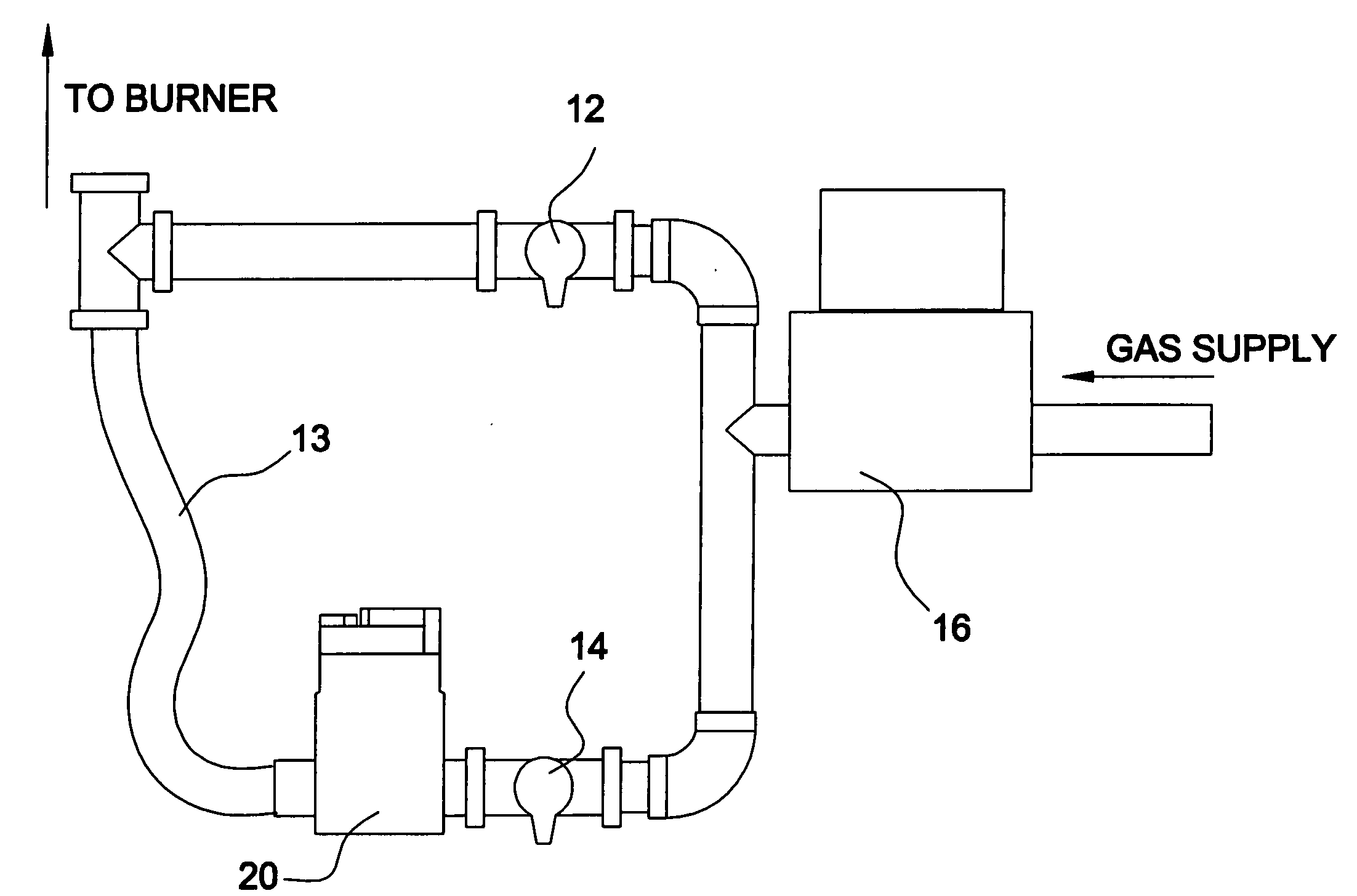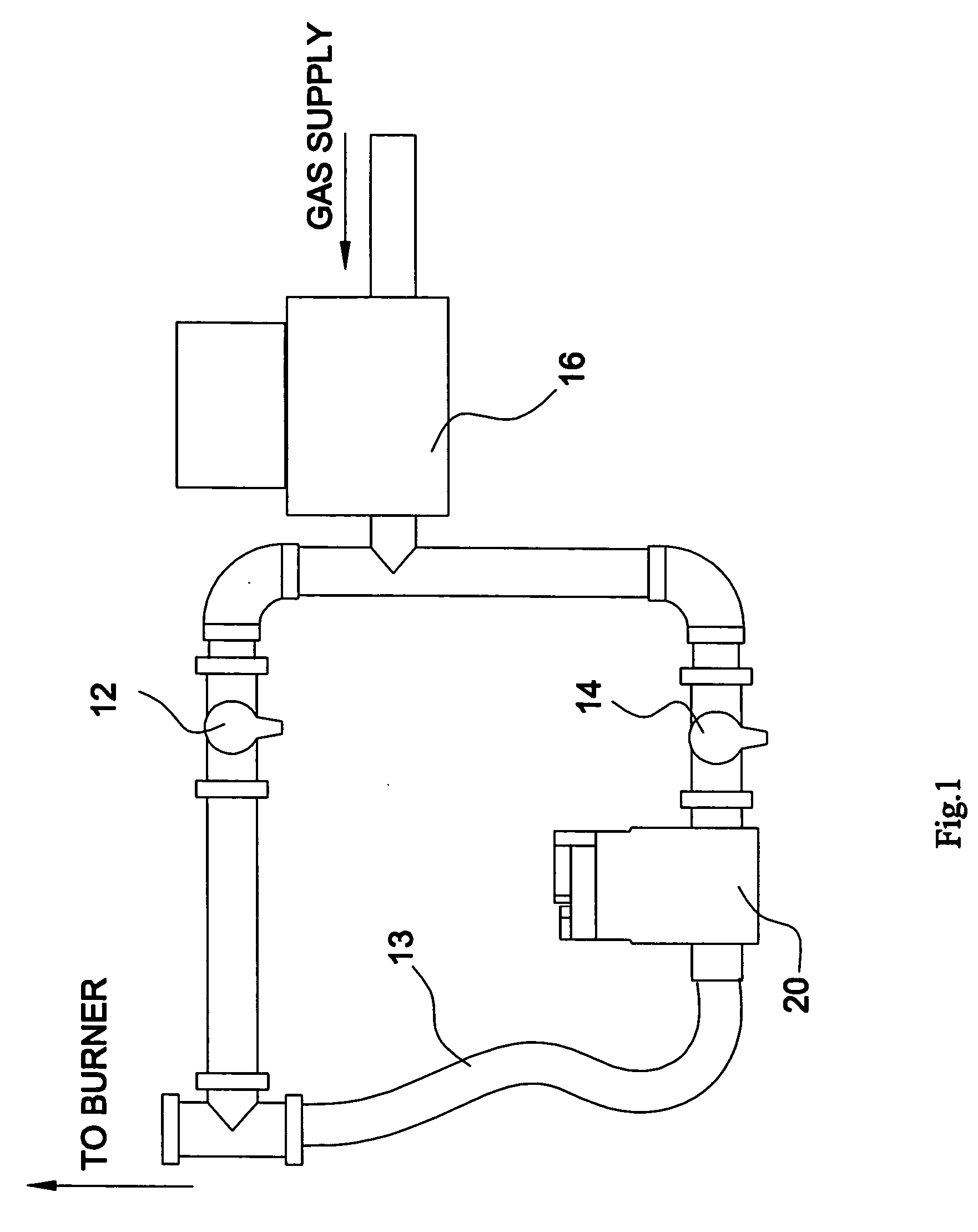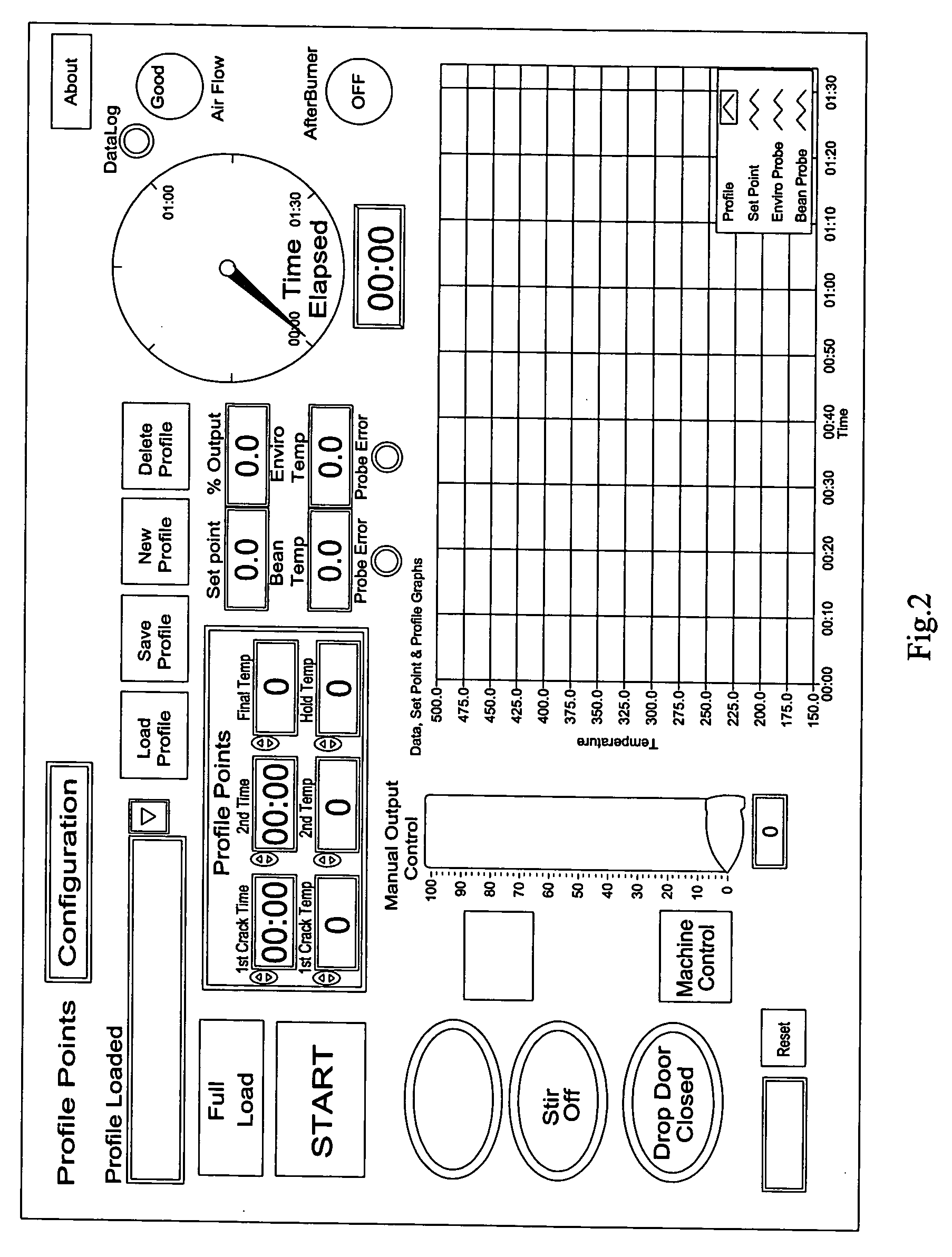Coffee roasting control system and process
a control system and coffee technology, applied in the field can solve the problems of inability to automatically adjust, lack of control of coffee roasting control systems, and less than desirable quality and consistence of roasting processes
- Summary
- Abstract
- Description
- Claims
- Application Information
AI Technical Summary
Benefits of technology
Problems solved by technology
Method used
Image
Examples
example 1
[0222] First set P=35, I=0, D=0, Temp change=250
[0223] Second set P=29, I=5, D=0, Temp Change=395
[0224] Third set P=23, I=7, D=0, Temp Change=600 (stays on this set for the remainder of the roast)
example 2
[0225] First set P=37, I=0, D=0, Temp change=300
[0226] Second set P=16, I=19, D=0, Temp Change=400
[0227] Third set P=14, I=18.2, D=0, Temp Change=600 (stays on this set for the remainder of the roast)
Profile Tuning Tab
[0228] Referring to FIG. 5, which is a screen shot of an example of a profile tuning tab, the profile control system utilizes a set point that is just above the actual bean temperature up until the bean temperature reaches the profile Hold Temp. The system takes the actual bean temperature and adds an Offset to it. If the offset is high enough, this is usually only a few degrees, the output will remain at 100% until the Hold temperature is reached. If you lower the value, the output will be reduced. For example: a value of 3 may give an output of 100%, but a value of 2 may only provide an output value of 75%, thus softening the initial heat applied to the roast.
[0229] The Profile Trigger value is used in calculating the drop in temperature the system must see bef...
PUM
 Login to View More
Login to View More Abstract
Description
Claims
Application Information
 Login to View More
Login to View More - R&D
- Intellectual Property
- Life Sciences
- Materials
- Tech Scout
- Unparalleled Data Quality
- Higher Quality Content
- 60% Fewer Hallucinations
Browse by: Latest US Patents, China's latest patents, Technical Efficacy Thesaurus, Application Domain, Technology Topic, Popular Technical Reports.
© 2025 PatSnap. All rights reserved.Legal|Privacy policy|Modern Slavery Act Transparency Statement|Sitemap|About US| Contact US: help@patsnap.com



